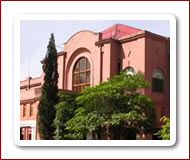| Dairy Club - News & Events | ||||||||||
The 6th Meeting of Dairy Club (Joint Venture between Alltech and UVAS) was held on Tuesday 4th October 2011 at Syndicate Room UVAS. Please find below minutes of the meeting:
Prof. Dr. Talat Naseer Pasha, UVAS opened the discussion forum by throwing light on different aspects of silage. He explained that industry is learning to produce good quality of silage. Now we have different types of silos in practice, modern harvesters and other equipments are there. Silage baling has also been introduced. But still we are not having proper harvesters which suit our cropping pattern. Chopping of fodder is another issue which needs attention because this also causes deterioration of silage quality. Mr. Toney from PLDDB shared his experience of silage making. He narrated that silage making is not a rocket science but dumping of freshly chopped fodder and making it air tight. Silage inoculants have beauty that these decrease the nutrient losses which normally occur. Inoculants add value to silage. Mr. Rick Thompson, Nestle declared maize silage as best quality silage. He told that haylage is better than silage if managed properly but production of butyric acid in haylage is main problem. Their team practice silage making in bunker at Sarsabz Farm and in piles at Sukheki Farm. They are getting equally good quality of silage. Mr. Rick added, “While making silage in piles, one must pay attention to the slope angle, it should be 45°”. As for as covering of silage is concerned, he prefers a layer of mud on top surface of silage (above polythene covering). Dr. Khalid from ANC shared his trials of making barseem silage by added wheat straw in it. He told that when barseem is available in excess we can make its silage and use it as valuable feed resource year round. He has conducted few experiments on barseem silage by using Sil-All as silage inoculant. He observed that while using Sil-All, there is no need of adding molasses in barseem silage. It gives very good drop in pH. He also observed good results in calf fattening. Prof. Dr. Makhdoom Abdul Jabbar, UVAS appreciated the worked done by Dr. Khalid. He also suggested having more trials on barseem silage to get the maximum benefit of this research. Dr. Ghulam Habib said, “Silage making is a practice in which everybody learns with experience and making mistakes”. He enforced that we should focus on diversified silage making by using alternative feed resources like sugar beet and potato leave, sugar beet pulp, etc. Sugar beet pulp is very good for calf fattening. Col. Muhammad Arshad Shad introduced the work of PLDDB. He told that they are going to import 50 silage harvesters, which will be available for the farmers in districts Kasur and Okara. He recommended silage bunker with both sides open. They are also working on baled silage. Col. Muhammad Arshad Shad is pioneer in introducing idea of baled silage in Pakistan. On the basis of his idea two other agencies has started their business. Prof. Dr. Aleem Bhatti persuaded PLDDB to involve investors in their project, as they will be the person who will take the charge ultimately.
Dr. Hisin Yi Chen from Alltech Taiwan expressed concerns about mycotoxins in silage. She explained that it is very unfortunate that farmers have a false concept of considering cows to be more tolerant to the mycotoxins. The feedstuff which is used to feed the cows is more prone to mycotoxins infestation. While making silage we should make sure proper sealing of the bunker/pit to avoid fungal growth. If there is issue of mycotoxins in silage then prefer to use a good quality mycotoxins binder.
Dr. Muhammad Zafar Ullah Khan, Alltech delivered a presentation on “Trouble shooting in silage”. He explained how we can assess the silage quality in field conditions. He also discussed the remedies and preferred future actions (presentation is available at dairy club website).
Dr. Shahzad Naveed Jadoon, Alltech summarized the meeting discussion. Schedule for next meeting was decided with the consent of all participants. Next Meeting Schedule:
Glimpse of the Meetings Glimpse of the 1st Meeting 24th February , 2011 During Technical session on “Mycotoxins effect on performance, profitability and remedies in dairy” arranged by Alltech Pakistan on 24th of Feb, 2011, idea of dairy club was introduced by Alltech. The idea was well appreciated by the participants. After this meeting a questionnaire was sent to the participants of meeting for feedback. On the basis of feedback 2nd meeting of dairy club was arranged Glimpse of the 2nd Meeting 20th April 2011
Glimpse of the 3rd Meeting 6th June 2011 Dairy Club Website/link: Mr. Rizwan Saleem, Director I.T., UVAS explained the options of making a link under UVAS website. Prof. Dr. Pasha, Prof. Dr. Naseem, Dr. Japie and many others gave their ideas on this website. Finally it was decided:
Heat Stress Management in Livestock
Glimpse of the 4th Meeting 4th July 2011
Glimpse of the 5th Meeting 12th September 2011
|
||||||||||


